Consultations
At St George Vets we offer consultations:
Monday - Friday
8.00am - 8.00pm
Saturday - Sunday
9.00am - 4.00pm
All our Veterinarians have extensive experience in veterinary medicine and are happy to examine and discuss any concerns related to your pet.
We strive to provide a professional service which is personable, thorough and informative and hope to develop close relationships with our clients and their pets. Seeing your same Vet each visit is what helps achieve this, so requesting your regular Vet is always encouraged.
Dog Vaccinations
Vaccinating against infectious diseases is an important way of keeping your puppy healthy and happy.
C7 Vaccination
All puppies require a course of 3 vaccinations, starting from 6-8 weeks. These are given one month apart and protect against distemper, infectious hepatitis, parvovirus and kennel cough.
Proheart vaccination
Heartworm is a parasite spread by mosquitos that can cause heart failure. Both the disease and treatment for the disease can be deadly.
Although monthly oral or topical preventatives are available, studies show that dogs can still be tested positive for disease. We recommend the annual Proheart vaccination to ensure year round prevention from disease.
-
Distemper
Distemper is a highly contagious disease causing fever, depression, discharge of pus from the eyes and nose, convulsions and death. Treatment is often ineffective.
-
Hepatitis
Hepatitis can cause sudden death in puppies. Adult dogs can suffer from fever, diarrhoea, bleeding and acute abdominal pain. In severe cases, death may occur within 24-36 hours.
-
Parvovirus
A highly contagious viral gastroenteritis. Signs include severe vomiting and diarrhoea, leading to extreme dehydration and frequently death within 24 hours.
-
Kennel cough
Consists of both canine parainfluenza virus and/or Bordetella bacteria. Both of these agents can cause a dry hacking cough that may persist for several weeks. While the vaccination will not offer 100% protection, the vaccination will help reduce the severity of symptoms and recovery time.
-
Canine Coronavirus
Can cause gastroenteritis, which is inflammation in the stomach and intestine with symptoms including vomiting and diarrhoea. These infections are contagious and can spread rapidly around kennels. Young dogs are most at risk of infection and developing serious illness. Your pet will receive an initial vaccine followed by a booster in 3 weeks, then annual boosters. Canine Coronaviruses is in no way related to the current ‘coronavirus’ outbreak causing respiratory illness in people.
-
Leptospirosis
Caused by the Leptospira bacteria, affects animals and humans and is spread through the urine of infected animals such as mice, rats, cattle and marsupials. Signs of leptospirosis may include fever, lethargy, inappetence/dehydration, vomiting, diarrhea, organ failures and death in extreme instances. Your pet will receive an initial vaccine followed by a booster in 3 weeks, then annual boosters.
Cat Vaccinations
F3 vaccination for Cats
Kittens should be vaccinated from 8 weeks of age, with a course of 3 vaccines.
- Feline panleucopaenia or infectious enteritis: is a highly infectious viral gastroenteritis. Clinical signs include fever, vomiting and/or diarrhoea and death.
- Feline herpes virus causes cat flu. Signs include sneezing, eye and nasal discharge. Some cats can become life long carriers and symptoms may recur when stressed.
- Calicivirus also contributes to cat flu. It causes upper respiratory tract symptoms, ulcers on the tongue, gums, lips or nose.
FIV vaccination for Cats
All cats with access to the outdoors or who interact with infected cats should be vaccinated. The FIV vaccination can be started from 8 weeks of age and requires a course of 3 vaccines, two weeks apart, to provide full protection. Immunity is then retained through yearly booster vaccines.
Feline immunodeficiency virus affects a cat’s immune system and is in the same class as human HIV. FIV is mostly spread through bite wounds from infected cats and therefore being un-desexed, male and outdoors increases risk.
Symptoms include fever, lethargy, loss of appetite, diarrhoea and swollen lymph nodes. Feline FIV can progress, just like human HIV, to AIDs.
Rabbit Vaccination
Rabbits require regular check ups and vaccinations to keep them healthy. In Australia we vaccinate against the rapidly fatal Rabbit Calicivirus Disease.
This virus is spread through close contact with infected rabbits and also through spread by biting insects. The virus is used by the government to control feral rabbit populations and is regularly released for this purpose.
Immunity against this disease requires six monthly booster injections of the CYLAP vaccine. Young rabbits can be started on the vaccine from 4 weeks, in high risk situations, and again at 10 to 12 weeks of age.
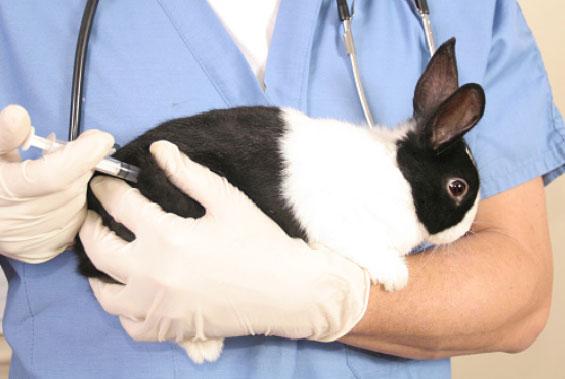
Rabbit vaccinations are a preventive measure to protect rabbits from various infectious diseases. Vaccinations work by stimulating the rabbit's immune system to produce antibodies that can recognize and fight off specific diseases.
- Calicivirus vaccine: This vaccine protects against a strain of calicivirus that can cause liver disease in rabbits.
The specific vaccines that your rabbit needs may depend on factors such as their age, breed, and whether they live indoors or outdoors. It's best to consult with a veterinarian who can recommend an appropriate vaccination schedule for your rabbit.
It's important to note that vaccinations do not provide 100% protection against diseases, and some vaccinated rabbits may still become ill if exposed to the virus. However, vaccinated rabbits are generally better able to fight off the disease and are more likely to recover.
Regular veterinary checkups and maintaining good hygiene practices are also important to keep your rabbit healthy.
Microchipping
Microchipping is a legal requirement in NSW and is best performed when your animal is still young.
Microchipping your pet involves inserting a small electronic chip, about the size of a grain of rice, under the skin of your pet, usually between the shoulder blades. The chip contains a unique identification number that can be read by a scanner. This number is linked to your pet's information, including your contact information and any important medical information, in a database.
Microchipping your pet is a safe and effective way to ensure that your pet can be identified if they are lost or stolen. It is a quick and relatively painless procedure that can be done by a veterinarian or trained professional. The microchip is designed to last for the lifetime of your pet and does not require any maintenance.
If your pet becomes lost or stolen, a microchip can greatly increase the chances of them being reunited with you. Animal shelters, veterinarians, and animal control agencies have scanners that can read the microchip and access your pet's identification number. They can then use this number to contact the database and retrieve your contact information.
It's important to keep your contact information up to date in the microchip database. If you move or change your phone number, make sure to update your information with the company that manages the database. This will ensure that you can be contacted if your pet is found.
Overall, microchipping your pet is a responsible and effective way to help keep them safe and secure.

Desexing
Desexing Cats and Dogs
The desexing of your pet is something that is strongly encouraged at SGV. This is a procedure which is best performed prior to your pet reaching its sexual maturity and is normally done around six months of age.
For all species the procedure is a day stay, whereby you drop your pet off between 8 and 9am (fasted from 9pm the night before) and can generally return to pick them up after 3pm in the afternoon.
Both castration and spaying are operations that the vets at SGV have extensive experience in performing. All animals are supported during their general anaesthetic by intravenous fluids, have intradermal (under the skin) sutures placed, to help stop them being chewed out, and are provided with take home pain relief.
We also offer keyhole (laparoscopic) desexing for female dogs and cats. This procedure is minimally invasive and allows for fast recovery and reduced pain for your pet.
Keyhole Surgery (Laparoscopy Surgery)
In recent years the ability to perform many procedures through small incisions using specialised cameras and instruments has become a reality in veterinary surgery. This option is only available in a small amount of veterinary practices in Sydney and we are proud that St George Vets has been one of those for several years.
Laparoscopic surgery involves specialised training and experience in these techniques. Our principal veterinarian, Dr. Shelton Smith, and senior veterinarian, Dr Pauline Phan, both have extensive knowledge and experience in performing a variety of laparoscopic procedures.
Keyhole surgery has the advantage of being minimally invasive and less traumatic. These advantages reduce post- surgical pain and greatly speeds up return to normal function. This form of surgery has many applications including - female de-sexing, retained testicles (cryptorchids), gastropexy and organ biopsies.
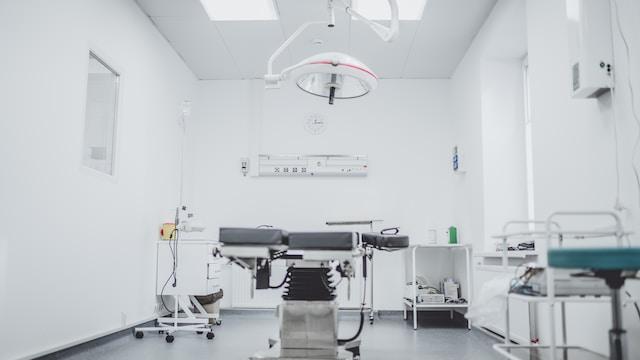
Cruciate Surgery
Cruciate disease is the most common cause of chronic hindlimb lameness in dogs. This injury commonly requires complex surgery to stabilise the problematic knee.
At SGV our surgeons have extensive experience with many forms of cranial cruciate surgery. Depending on your pet’s size and conformation, our vets will recommend the operation which will most likely result in return to normal function on the leg.
These surgeries include lateral sutures (De Angelis Procedure), Modified Marque Procedure (MMP) and Tibial Plateau Levelling Osteotomy (TPLO). These surgeries are all available at SGV.
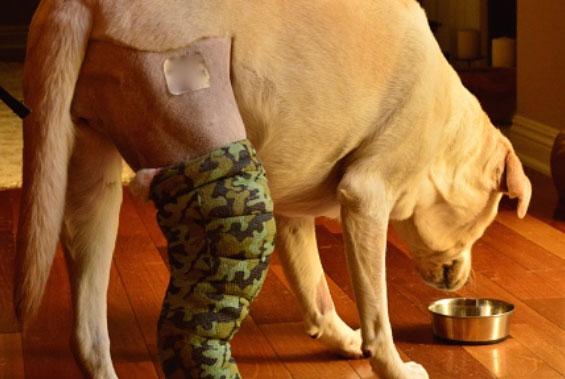
Cruciate surgery is a surgical procedure performed on dogs to repair a ruptured or torn cranial cruciate ligament (CCL), which is similar to the anterior cruciate ligament (ACL) in humans. The CCL is one of the main stabilising ligaments in a dog's knee joint and is commonly injured, particularly in certain breeds and in overweight or obese dogs.
There are several surgical options for cruciate surgery in dogs, including:
-
Tibial plateau leveling osteotomy (TPLO): This surgery involves cutting and reshaping the top of the tibia bone to change the angle of the knee joint, reducing the need for the CCL to provide stability.
-
Extracapsular repair: This involves placing a suture outside the joint to stabilize the knee and replace the function of the damaged ligament.
-
Tightrope procedure: This is a newer technique that uses a special implant to stabilize the joint and provide support without the need for a bulky surgical suture.
The specific surgical technique used will depend on the size and breed of your dog, as well as the severity of the injury.
Recovery from cruciate surgery can take several months, during which your dog may need to be restricted from physical activity and require physical therapy. Your veterinarian will provide specific instructions for postoperative care and rehabilitation.
It's important to note that not all dogs with a torn or ruptured CCL will require surgery. In some cases, conservative management, such as rest, pain management, and physical therapy, may be sufficient. Your veterinarian can help determine the best course of treatment for your dog based on their individual needs and circumstances.
Orthopaedic Surgery
If your pet has an injury which requires bone surgery, then you can be assured that their operation can be performed at St George Vets.
At SGV, we have a specialist orthopaedic surgeon to perform any complex surgery that may arise.
This means your pet can stay in familiar surrounds without needing to travel to a referral centre and also reducing overall costs.
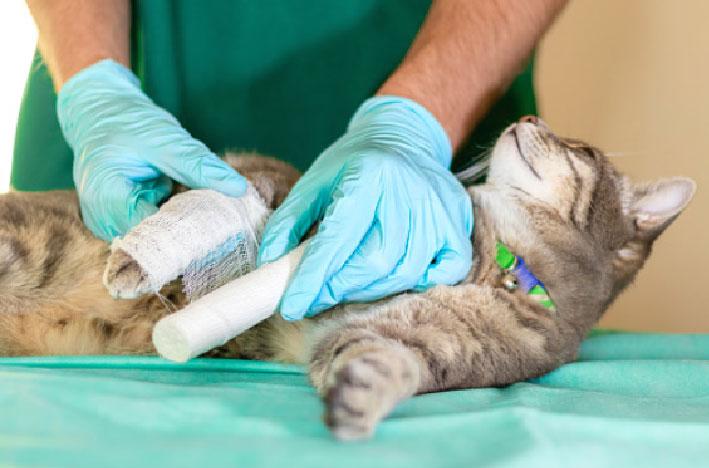
Orthopedic surgery is a specialised field of veterinary medicine that focuses on surgical treatment of injuries and diseases affecting the bones, joints, muscles, ligaments, and tendons of animals. Orthopedic surgery is commonly performed on pets, especially dogs and cats, and can be used to treat a wide range of conditions, including:
-
Fractures: Broken bones can be repaired using a variety of techniques, including plates, screws, and pins.
-
Joint disease: Joint conditions such as hip dysplasia, elbow dysplasia, and osteoarthritis can be treated with joint replacement surgery, arthroscopy, or other procedures.
-
Torn ligaments: Torn ligaments, such as a ruptured cruciate ligament in the knee, can be repaired with surgical procedures such as TPLO, extracapsular repair, or tightrope procedures.
-
Spinal cord injuries: Spinal cord injuries, such as herniated discs or spinal fractures, can be treated with spinal surgery.
Orthopedic surgery in pets is generally performed by a specialist veterinarian who has received specialised training in this field. The surgery may be performed under general anesthesia, and the pet may need to stay in the hospital for a period of time to recover. Pain management and rehabilitation may be necessary during the recovery period to help the pet regain mobility and function.
It's important to note that not all orthopedic conditions require surgery, and conservative management such as rest, physical therapy, and pain management may be sufficient in some cases. Your veterinarian can help determine the best course of treatment for your pet based on their individual needs and circumstances.
Dentistry
Dental Disease in dogs and cats
Just like humans, dogs and cats need to take care of their teeth too. Dental disease is the most common health problem in our pets and commonly remains unnoticed until quite advanced.
Dental disease causes pain and infection, which ultimately affects our pets quality of life. Dental procedures can range from a basic scale and polish, to remove tartar, to multiple teeth extractions in the case of severely diseased teeth.
If your pet’s teeth appear discoloured, their breath is smelly, or they are showing signs of reluctance to chew, then don’t hesitate to call for a free dental check with one of our experienced nursing staff.

Dental disease is a common problem in pets, particularly in dogs and cats. It can be caused by a variety of factors, including poor dental hygiene, genetics, age, and diet. Dental disease can range from mild tartar buildup to more severe gum disease, tooth decay, and even tooth loss.
Signs of dental disease in pets can include:
- Bad breath
- Yellow or brown discoloration on teeth
- Swollen, red, or bleeding gums
- Loose or missing teeth
- Drooling or difficulty chewing
- Loss of appetite or weight loss
If left untreated, dental disease can lead to more serious health problems, such as infections, abscesses, and even heart or kidney disease.
Prevention and treatment of dental disease in pets involves a combination of at-home dental care and regular veterinary checkups. At-home dental care can include daily brushing of the pet's teeth using a pet-specific toothpaste, dental chews or toys, and a healthy diet. Regular veterinary checkups should include a thorough dental exam and professional cleaning, which involves scaling and polishing the teeth under general anesthesia.
In some cases, more advanced treatment may be necessary, such as extractions or root canals. Your veterinarian can provide guidance on the best course of treatment for your pet's individual needs.
Overall, prevention and early detection are key to managing dental disease in pets. Regular dental care can help keep your pet's teeth and gums healthy and prevent more serious health problems down the line.
Blood Tests
On-Site Blood Testing for Animals
At St George Vets, we are able to to offer a range of onsite blood testing. This enables a quick turn around with obtaining results and better care for your pet.
Any other pathology testing can be easily arranged for external laboratory testing.
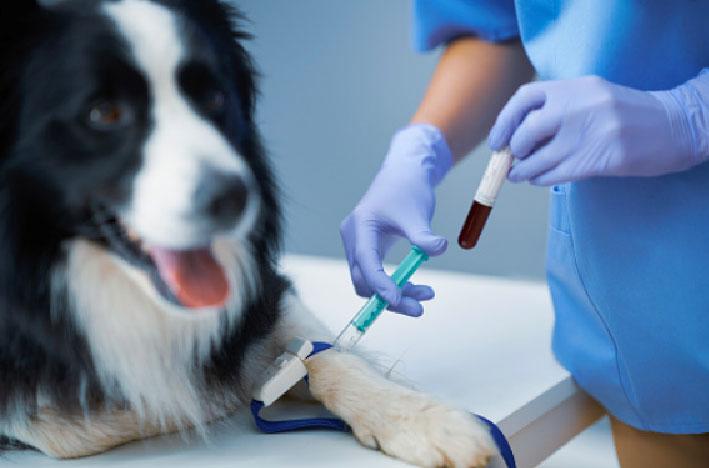
As a pet owner, ensuring the health and well-being of your furry friend is a top priority. Regular check-ups with a veterinarian can help detect and prevent illnesses early on, but sometimes further testing is necessary to diagnose or monitor a medical condition. That’s where on-site blood testing for animals can be a valuable tool.
At our animal clinic, we offer on-site blood testing for a variety of reasons. The most common reason for blood testing is to perform a wellness exam, which can help detect underlying health issues that may not be obvious through physical examination alone. Blood tests can also be used to monitor the progress of treatment for certain conditions, such as diabetes or thyroid disorders.
In addition, blood testing can help identify infections or diseases, such as heartworm or tick-borne illnesses. Early detection of these diseases is crucial for effective treatment and can help prevent serious health complications down the line.
One of the biggest advantages of on-site blood testing for animals is the quick turnaround time for results. Rather than waiting days or even weeks for lab results to come back, our on-site testing allows us to obtain results in a matter of minutes. This means we can diagnose and treat your pet faster, leading to better outcomes and less stress for you and your pet.
Our staff is highly trained in animal blood testing and uses state-of-the-art equipment to ensure accurate results. We understand that blood testing can be stressful for pets, so we take great care to minimize discomfort and keep them as calm as possible throughout the process.
If you’re concerned about your pet’s health or are simply due for a wellness exam, we encourage you to consider on-site blood testing at our animal clinic. Our team of dedicated professionals is here to provide the best possible care for your furry family member.
X-Ray Services
St George Vets offers onsite radiology services with state of the art digital xray equipment.
If any illness or injury requires an Xray to investigate further, this can be performed quickly and efficiently at our clinic.

X-rays can be used to visualise bones, joints, organs, and soft tissues, and can help detect a variety of conditions, including fractures, tumours, foreign objects, and other abnormalities.
The process of taking X-rays of a pet is similar to that of taking X-rays of a human. The pet will be positioned on a table or stand, and the X-ray machine will be positioned over the area of interest. The X-ray technician or veterinarian will then take the X-ray, which usually only takes a few seconds. In some cases, sedation may be necessary to keep the pet still during the X-ray.
Once the X-ray has been taken, the images will be developed and interpreted by a veterinarian. The results of the X-ray can help guide diagnosis and treatment of the pet's condition.
It's important to note that X-rays do expose pets (and humans) to a small amount of radiation, but the benefits of the diagnostic information they provide usually outweigh the risks. Additionally, veterinarians take precautions to minimise the pet's exposure to radiation, such as using lead aprons and collars to shield the pet's body from unnecessary exposure.
If your pet needs to have X-rays taken, your veterinarian can provide more information about the process and what to expect.
Endoscopy
At St George Vets we have a range of flexible and rigid endoscopy equipment to provide the best care for your pet. Investigations of the respiratory and gastrointestinal tract often require endoscopy to fully appreciate the situation.
Practice owner, Dr Shelton Smith, has undertaken post-graduate courses in endoscopy and has many years experience with endoscopic procedures.
Your vet will recommend endoscopy when indicated in the diagnosis or treatment of your pet.
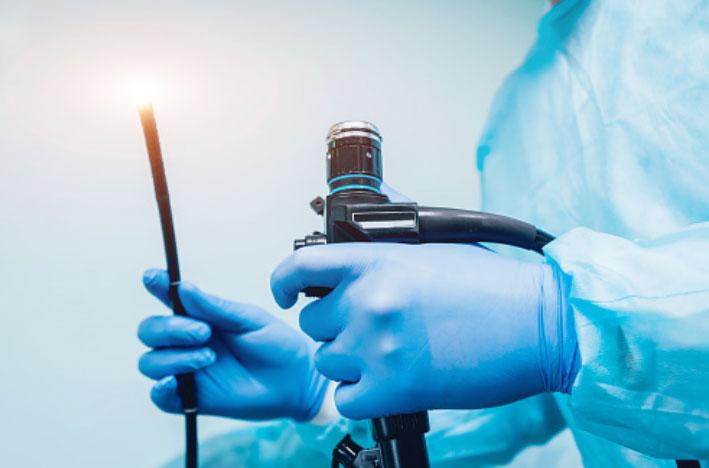
Endoscopy is a minimally invasive diagnostic and therapeutic procedure that can be used to examine and treat various medical conditions in pets. The procedure involves inserting a long, thin, flexible tube called an endoscope into the pet's body through a natural opening, such as the mouth, nose, or rectum.
Endoscopy can be used to examine the digestive tract, respiratory tract, urinary tract, and other organs and tissues. The endoscope contains a small camera that allows the veterinarian to see inside the body and identify any abnormalities or conditions that may be present. The endoscope can also be used to take tissue samples for biopsy or to remove foreign objects or growths.
The endoscopy procedure is usually performed under general anesthesia to ensure that the pet is comfortable and still during the procedure. The pet's vital signs are closely monitored throughout the procedure to ensure their safety.
Some common uses of endoscopy in pets include:
- Examining the digestive tract for ulcers, tumors, and other abnormalities
- Removing foreign objects, such as swallowed toys or bones, from the digestive tract
- Examining the respiratory tract for tumors or infections
- Collecting samples from the lungs for biopsy or culturing
- Examining the urinary tract for stones or tumors
Overall, endoscopy is a safe and effective tool for diagnosing and treating various medical conditions in pets. If your pet needs to undergo an endoscopy procedure, your veterinarian can provide more information about the process and what to expect.
Ultrasound
Ultrasound is a non-invasive way to investigate the internal structures of your pet.
Ultrasound is an effective imaging technique used regularly at SGV to provide our patients with the best care available.
The skills of an ultrasound specialist are available at SGV when required.


